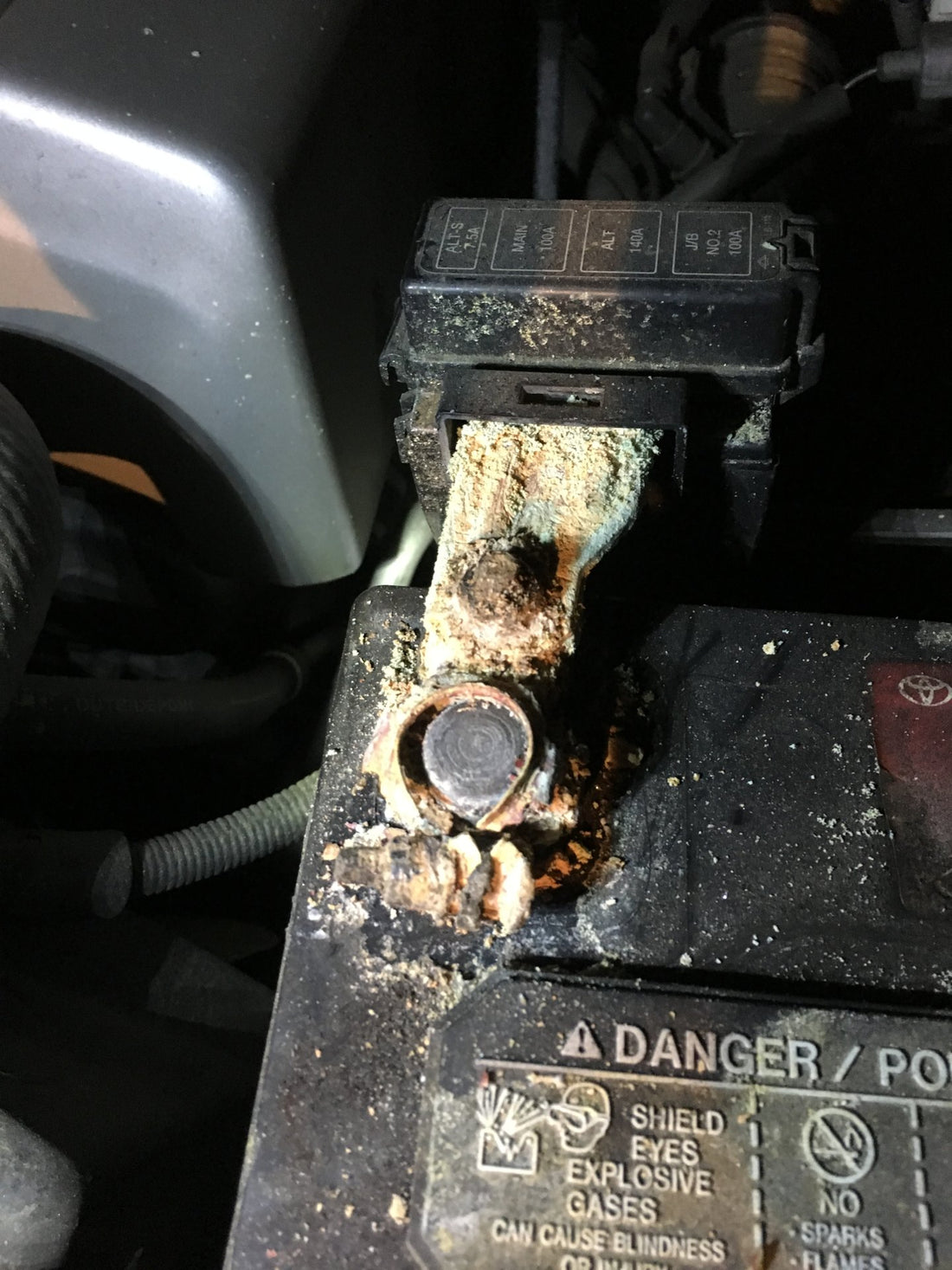
Clean the corrosion of your car's battery terminals
Share
About the car battery.
A car's battery is a device that provides the electrical power needed for the engine to start.
About cleaning the battery terminals.
Maintaining your car's performance and battery life is so important that it defines whether your car starts or not. No one wants to suffer in case the car doesn't turn on when it's going to work, or that the air conditioner doesn't work, but more importantly, no one wants to deal with damaged electrical wiring.
There are many ways to maintain battery life, but one of the simplest and most common is to clean the battery terminals. Why are these terminals cleaned? They are over time filled with corrosion or sulfatan, which is when you start to see a white, green or blue layer around the battery terminals. This causes the battery's conductivity to decrease, so its effectiveness drops.

Why do battery terminals corrode?
When the battery is used, chemical reactions between lead and sulfuric acid occur that cause small sulfate crystals to appear, which over time accumulate and solidify crystal clearly if the battery is not used or discharged. That is, corrosion battery sulfation is the crystallization of the battery lead sulfate.
This is a problem that can be avoided by not leaving the car long unused or maintaining water levels. But, if you haven't been able to avoid it, removing corrosion is very simple, just clean the sites where the corrosion is, which is mainly on the battery terminals. Doing this cleaning won't take time away and the tools used are cheap, which makes this maintenance perfect when it comes to saving money on your car.
Tools Required.
- Gloves
- Toothbrush
- Water
- Baking soda
- Rag
Steps for cleaning the battery terminals.
- Locate the battery: Usually the batteries are located under the hood, but some models have it in the trunk.
- Disconnect the battery cables: First, make sure the motor is turned off. You must now remove the plastic covers that protect the batteries so that you can access the clamps that connect the cables to the terminals. You can now remove the cables, but if you do not want to electrocute, first remove the negative cable (black color), and then the positive cable (red color). It is recommended that you do not touch any metal components while performing this task, because it may cause the battery to short-circuit.
- Check the battery: Make sure the battery is disconnected so you can check it. You can start with the wires, as they may be frayed, chipped, or corroded, and if they are, it's time to replace them. Now, with the battery, if it leaks or is swollen, you must buy a new battery.
- Clean battery corrosion: You can buy a commercial battery cleaner, but if you want to save money, you only need baking soda and water. Mix a tablespoon of baking soda in a cup of water. Now, dip the toothbrush into the mixture and start rubbing the brush into the corroded parts of the battery, including the terminals. Keep it up, constantly cleaning the brush, until it removes all corrosion.
- Rinse and dry: Quickly rinse cleaned parts. To do this you can spray with a little water or use a damp cloth, to finish drying everything with a dry cloth. Reconnect the cables (first positive and then negative), then the covers and you're done.

Latest Recommendations.
To prevent corrosion, before putting the cables, you can apply some vaseline to the terminals. This will cause them to lubricate, preventing high corrosion and improving the connection.
The half-life of a battery is four years, although weather is an important factor in determining this. Keep this in mind when any battery maintenance of your car.
